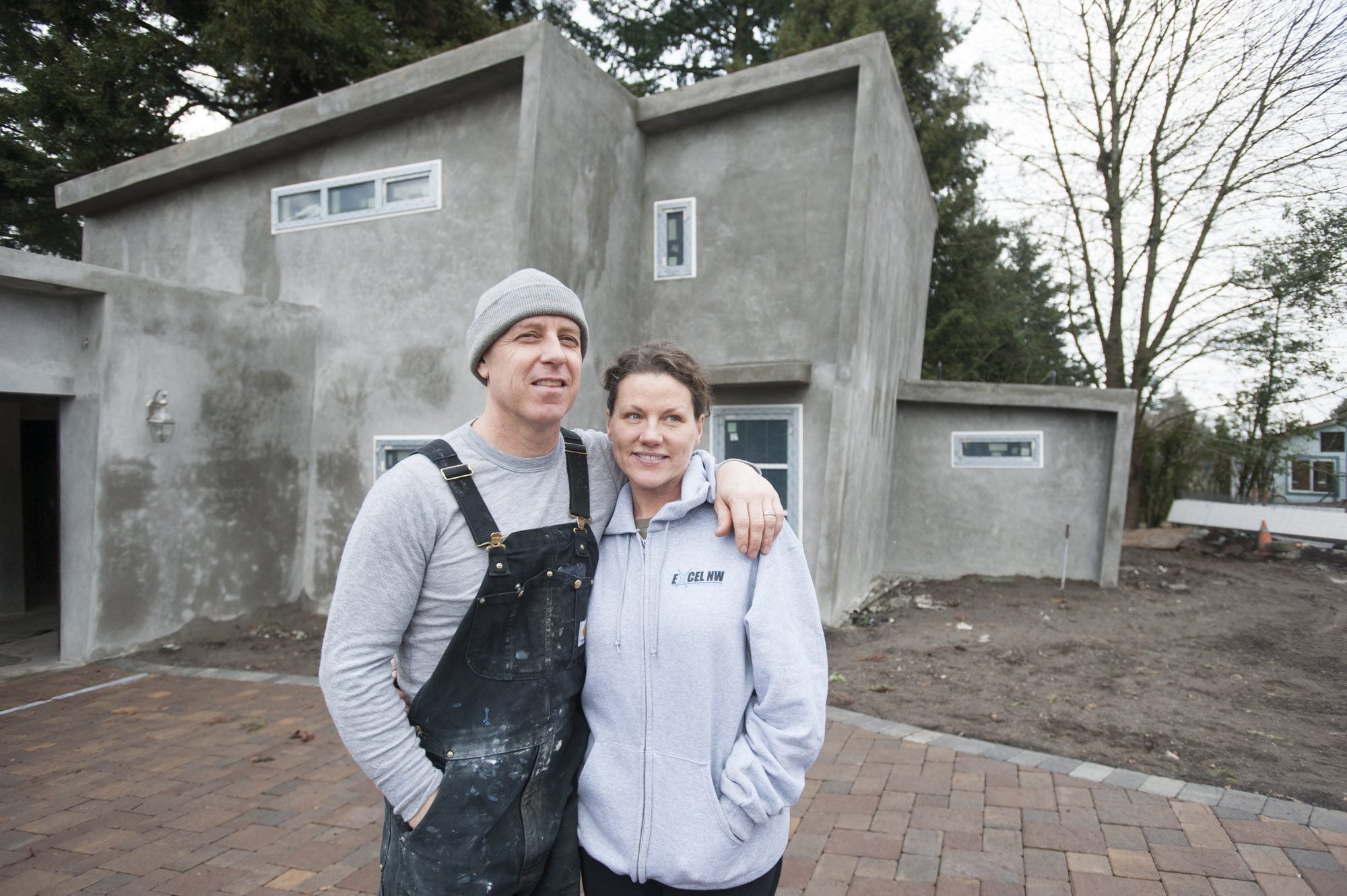The Sylvan Ecohouse was supposed to be a modern, angular house using the latest and greatest energy efficiencies, its slanted roof pointed skyward.
“Tomorrow has arrived,” announced a sign outside the home in Vancouver’s Truman neighborhood during construction in 2013 that touted solar panels and a graywater-reuse system in addition to the unusual concrete exterior.
But tomorrow didn’t come.
After the project was abandoned partway through construction, the white foam house surrounded by trees sat vacant. Occasionally, optimistic buyers looked at the house, only to back out after they realized the effort and money it would take to complete the structured concrete insulated panel, or SCIP, house, a rare type of construction in the Pacific Northwest.
The original owner, Michael Tausch, had a “spiritual connection” with a redwood tree on the 0.44-acre property, said Sue Pauley, a broker with Windermere Real Estate. The planned SCIP home was Tausch’s dream, she said.





